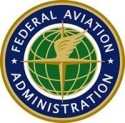Sat, Oct 09, 2010
Would Require Formal Safety Management Plans In Place For Ramp
Areas At All Part 139 Airports
 It's going to potentially be a little more difficult to be on
an airport ramp under rules proposed by the FAA Thursday to require
airports certificated under Part 139 to put in place safety
management systems (SMS) for all airfield and ramp areas.
It's going to potentially be a little more difficult to be on
an airport ramp under rules proposed by the FAA Thursday to require
airports certificated under Part 139 to put in place safety
management systems (SMS) for all airfield and ramp areas.
There are currently 553 airports in the U.S. that hold Part 139
certificates. These certificate holders serve scheduled and
unscheduled air carrier aircraft with more than 30 seats. These
certificate holders also may serve scheduled air carrier operations
with air carrier aircraft with more than nine but less than 31
seats.
SMS is a formal approach to managing an organization's safety
through four key components — safety policy, safety risk
management, safety assurance, and safety promotion.
This proposal will help airports enhance safety by developing an
organization-wide safety policy; implementing methods to mitigate
airport hazards; and analyzing and mitigating risks before they
change airport procedures or infrastructure. The proposed rule
requires that SMS be used for airport movement and non-movement
areas which includes runways, taxiways, ramps, aircraft parking
aprons, and fuel farms. The FAA believes that SMS will provide an
additional layer of safety at airports and help reduce airport
incidents and accidents. Airports will have the flexibility to
implement a SMS plan that considers their unique operating
environment.
While the proposed SMS requirement will not take the place of
regular FAA Part 139 inspections, this proactive emphasis on hazard
identification and mitigation will provide airports with robust
tools to improve safety.
Airports are identified by four classes, depending on the type
of air carrier service at the airport. The proposal states
that Class I airports would be required to develop a SMS
implementation plan within six months and implement within 18
months after the final rule is published. The remaining Class
II, III, and IV airports would be required to develop a SMS
implementation plan within nine months and implement within 24
months after the final rule is published. The FAA will review
and approve the SMS implementation plans.
The NPRM is published in Thursday's Federal Register and open
for a 90-day public comment period that ends on January 5,
2011.
More News
“These new aircraft strengthen our ability to respond quickly, train effectively and support communities nationwide. Textron Aviation has been a steadfast supporter in helpin>[...]
From 2011 (YouTube Edition): Rugged, Legendary, STOL Twin Makes A Comeback The de Havilland Twin Otter is an airplane with a long history, and it gained a reputation as a workhorse>[...]
A Wind Gust Lifted The Right Wing And The Airplane Turned To The Left Analysis: The pilot was departing from a 2,395-ft-long by 50-ft-wide turf runway. The pilot reported that afte>[...]
Have A Story That NEEDS To Be Featured On Aero-News? Here’s How To Submit A Story To Our Team Some of the greatest new stories ANN has ever covered have been submitted by our>[...]
Braking Action Advisories When tower controllers receive runway braking action reports which include the terms “medium," “poor," or “nil," or whenever weather con>[...]
 Aero-News: Quote of the Day (12.18.25)
Aero-News: Quote of the Day (12.18.25) Classic Aero-TV: Viking Twin Otter 400--Bringing the DHC-6 Back Into Production
Classic Aero-TV: Viking Twin Otter 400--Bringing the DHC-6 Back Into Production NTSB Final Report: Rans Employee Flying Club Rans S-6ES Coyote II
NTSB Final Report: Rans Employee Flying Club Rans S-6ES Coyote II ANN FAQ: Submit a News Story!
ANN FAQ: Submit a News Story! ANN's Daily Aero-Term (12.18.25): Braking Action Advisories
ANN's Daily Aero-Term (12.18.25): Braking Action Advisories



